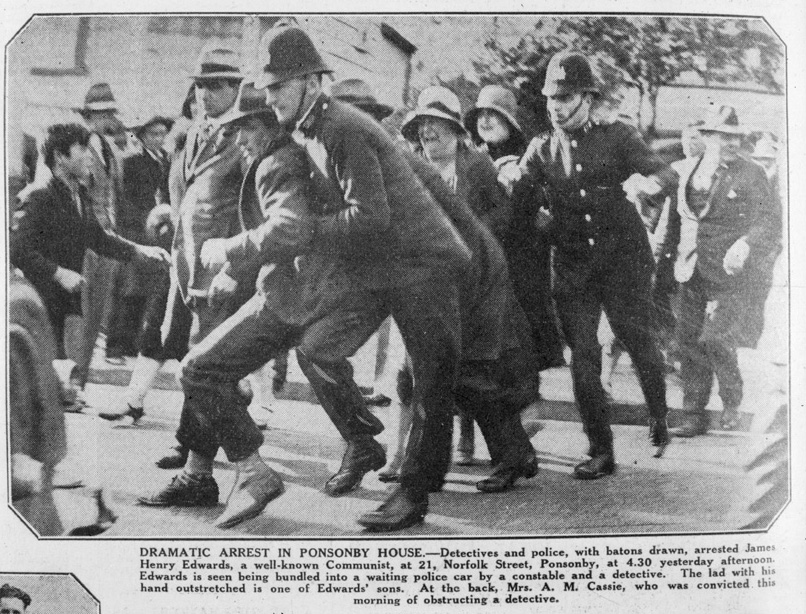On New Terrain: How Capital is Reshaping the Battleground of Class War
By Kim Moody (Haymarket Books, Chicago 2017)
Is there a revival of working-class confidence happening in Aotearoa? The PPTA and NZEI are going into bargaining with big pay claims (e.g. 16 percent over two years for primary teachers) and health workers went on strike for the first time in decades. The NZEI went on strike in winter, and will have rolling strikes in term four. So far this year there has been action by bus drivers, at Event Cinemas, Wendys, Auckland trains, Lyttleton port, Burger King, Blue Star Group printers and Silver Fern Farms. Wellington bus drivers begin an indefinite strike in late October. Their brothers and sisters in Auckland will follow.
This revival takes place, however, in a context of ongoing crisis for our movement. Membership has fallen massively. In 1985 almost half of the workforce was in unions but, by the 2010s, less than 9% of those in the private sector are members. We lost some 320,000 members through the 1990s, as the Employment Contracts Act made it difficult to organise and easier for bosses to attack. Workers’ confidence to fight has slipped. There were 381,710 days ‘lost’ to strikes in 1988; by 2014 that number had slumped to just 1,448. The benefits of union membership are concentrated in the public sector, and union members are older than the working population generally.
What explains this decline? Many commentators argue that the nature of work has changed over the last thirty years, making union power less relevant. We have seen the rise of a “precariat”, Guy Standing claims, drifting in insecure jobs with little to gain from unionism. Others look for new ways of building – the ‘organising model’ – that use community support and savvy media campaigning to work around our workplace weaknesses. Helen Kelly pioneered imaginative campaigning like this, and the Living Wage movement has won victories with similar approaches. There’s much here to support, but it still avoids, rather than confronts, the key question: without union power, the power of the strike, what future will our movement have?
Kim Moody’s On New Terrain: How Capital is Reshaping the Battleground of Class War offers fascinating insights into the state of the US economy and labour movement currently, and advances some answers as to how we can rebuild union power. His book is full of rich analyses relevant to the Aotearoa situation.
Moody’s book has three parts. The first analyses the “remaking of the US working class”. He argues against the orthodox view that globalisation has weakened US labour, and shows that, despite staggering job losses, “manufacturing output in the United States has not declined overall.” Job losses can be explained by factors “internal to the workings of US capitalism […] the rise of productivity extracted after 1980 by the rise of lean production methods, new technology and capital’s accelerated counter-offensive against labour.” These are all products of class struggle, things capital won from labour during the neoliberal offensive of the 1980s and 1990s, exemplified in this country by the Employment Contracts Act.
Studying data carefully, Moody shows how the growth of precarity has been exaggerated. The feeling of precariousness comes from increased unemployment rates and weakened union control; again, political questions to do with organising and resistance. The good news is that precariousness is not the new norm; the bad news is that “a good deal of the working class has never held jobs sufficiently well paid to meet their daily needs, which is not some new phenomenon.” Moody’s exploration of the changing ethnic, gender and citizenship diversity in the class offers cause for optimism. The US working class is more diverse than it has ever been – and justice movements like Black Lives Matter drive workers into action outside the job.
Part Two looks at “the changing terrain of class struggle”, showing how “the larger size of national or regional corporations in many industries; the huge concentration of workers […] in urban areas; and the fragility of the whole just-in-time logistics supply chain system” leaves the new capitalism vulnerable to workers’ resistance.
What then is holding us back? Part Three explores “the changing political terrain”, showing how disastrous the trade union leadership’s orientation to the Democrats and hopes for social peace have been for their members. Moody’s statistics paint a compelling portrait: when unions use the strike weapon and foster worker self-confidence, they grow. When the tie themselves to pro-business politicians and dreams of industrial peace, they decline. So much so, in fact, that in the US today the movement faces what could be a terminal crisis.
The way out of that crisis, Moody concludes, is by rebuilding from below. His book finished with a series of illuminating appendices showing the work of Labor Notes, a rank and file newsletter and conference dedicated to reporting on and supporting union struggle, in building networks of militants across the unions.
Everything in this book makes for compelling and timely reading. It should be studied and debated across our movement, and offers pressing lessons for the coming years.









